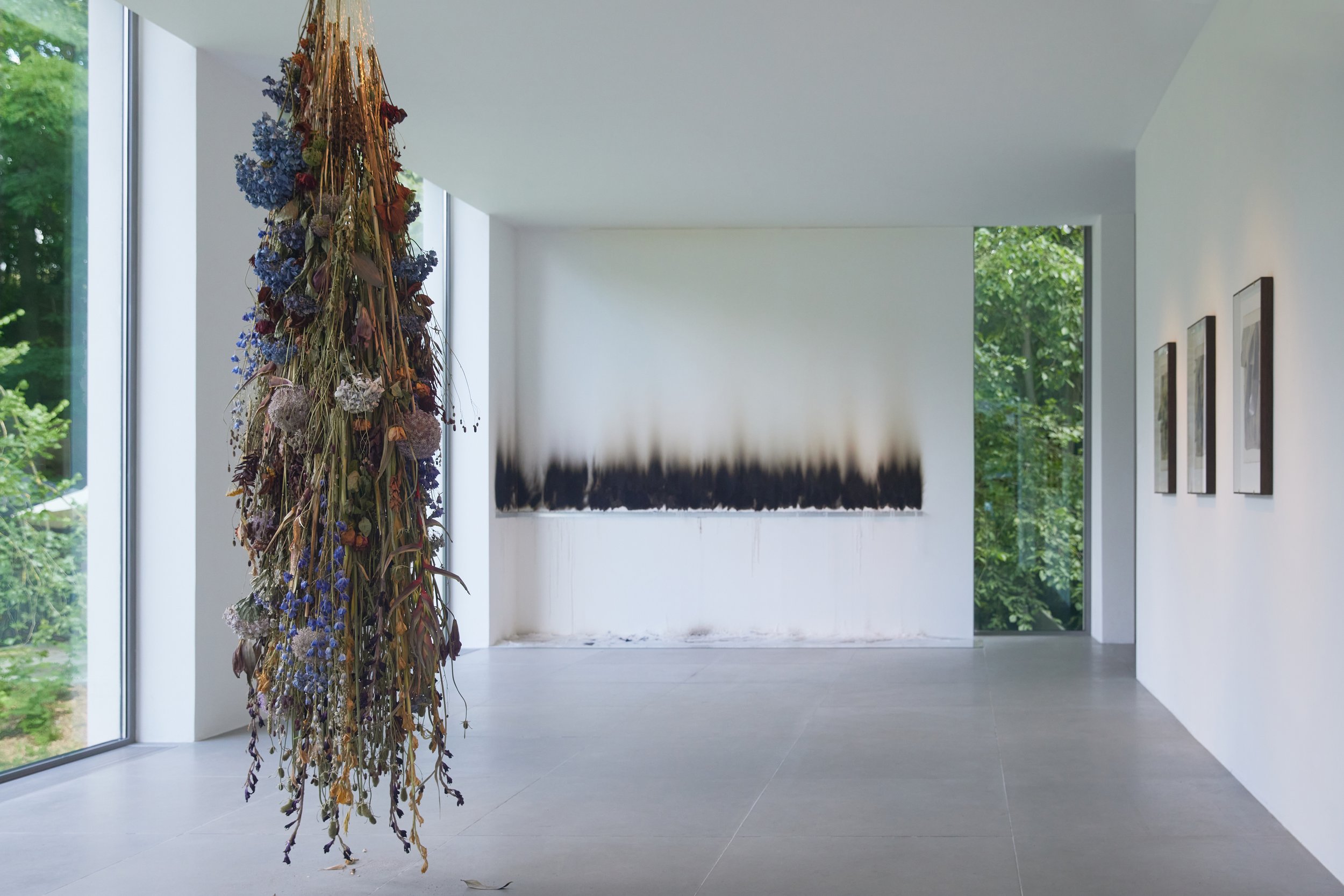
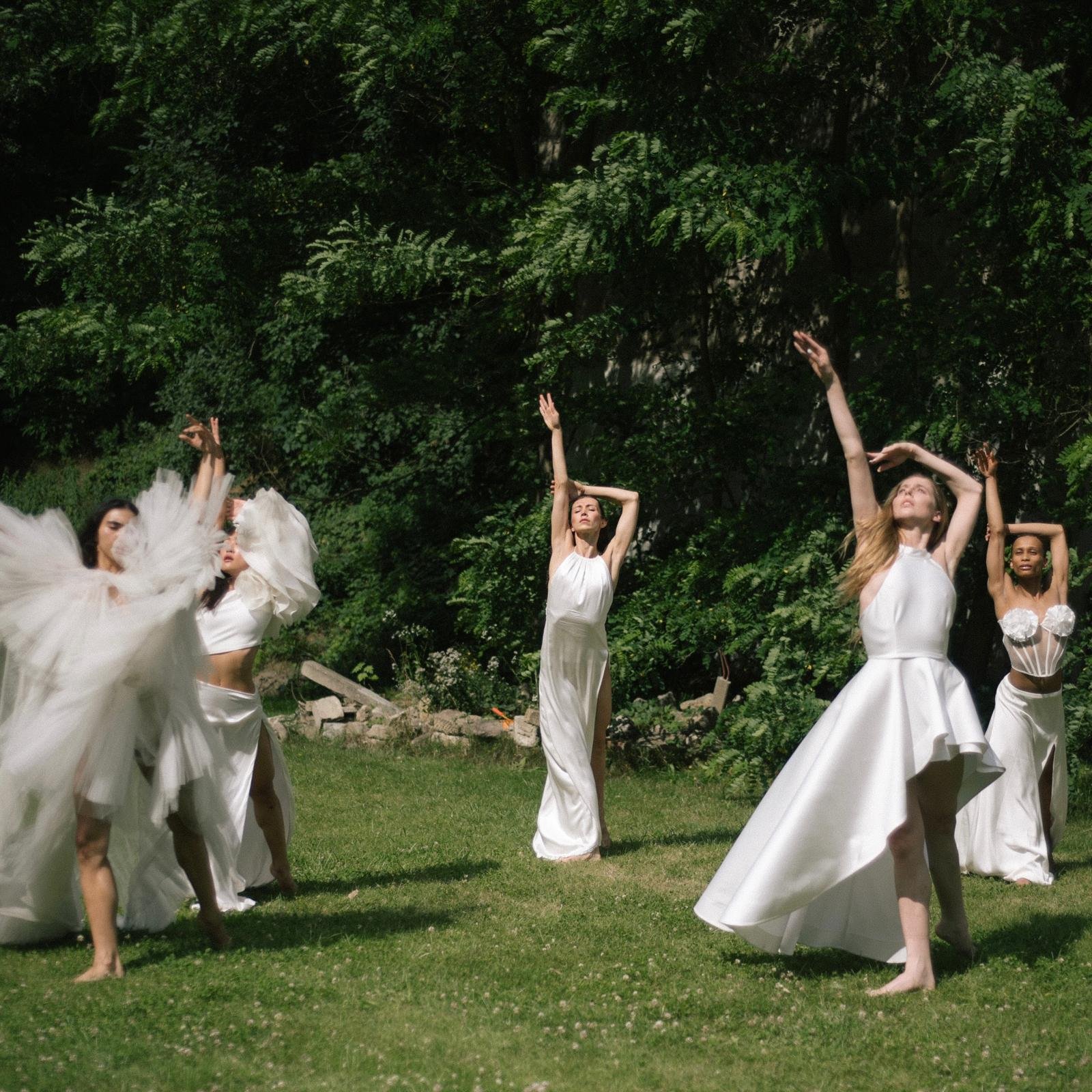
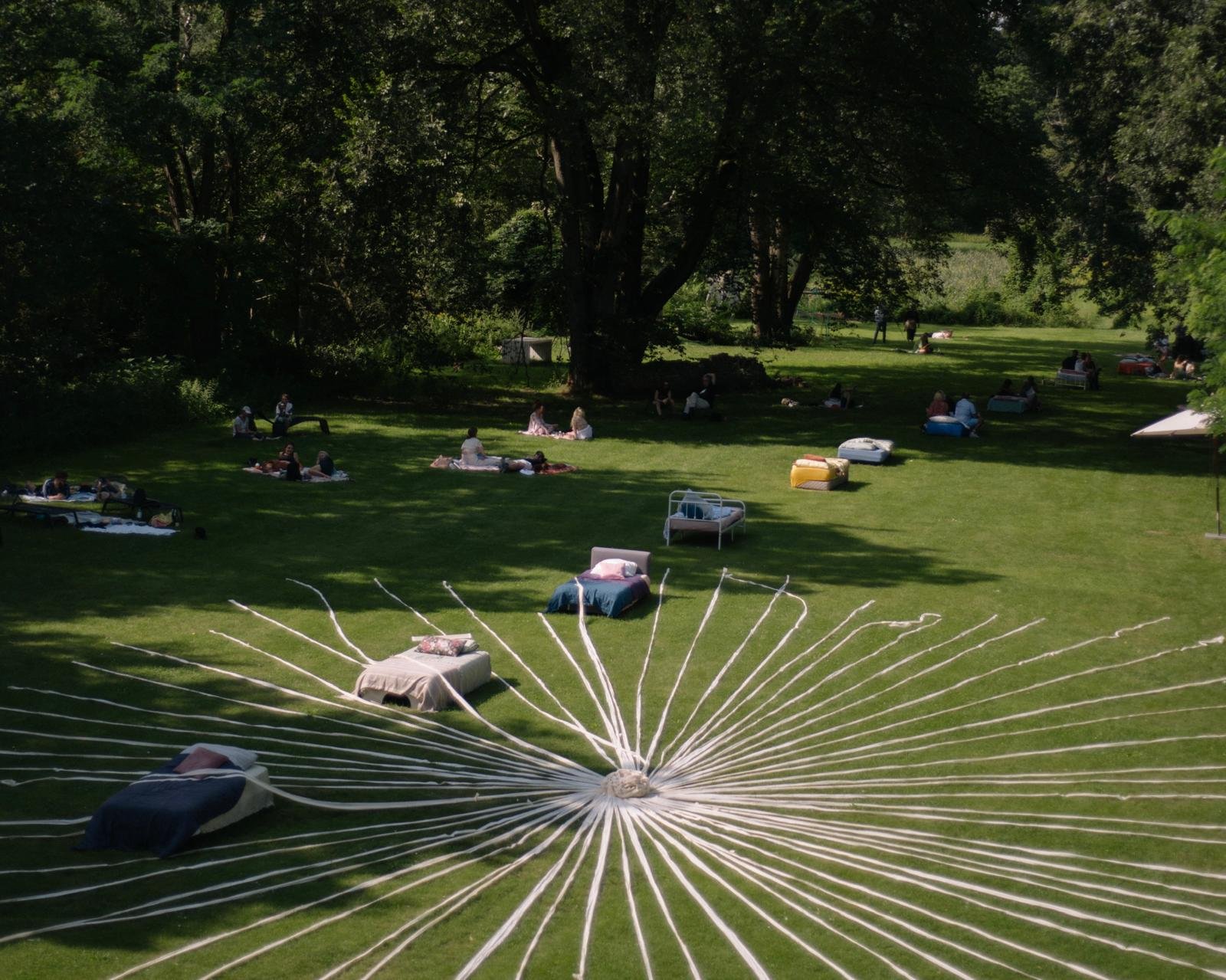
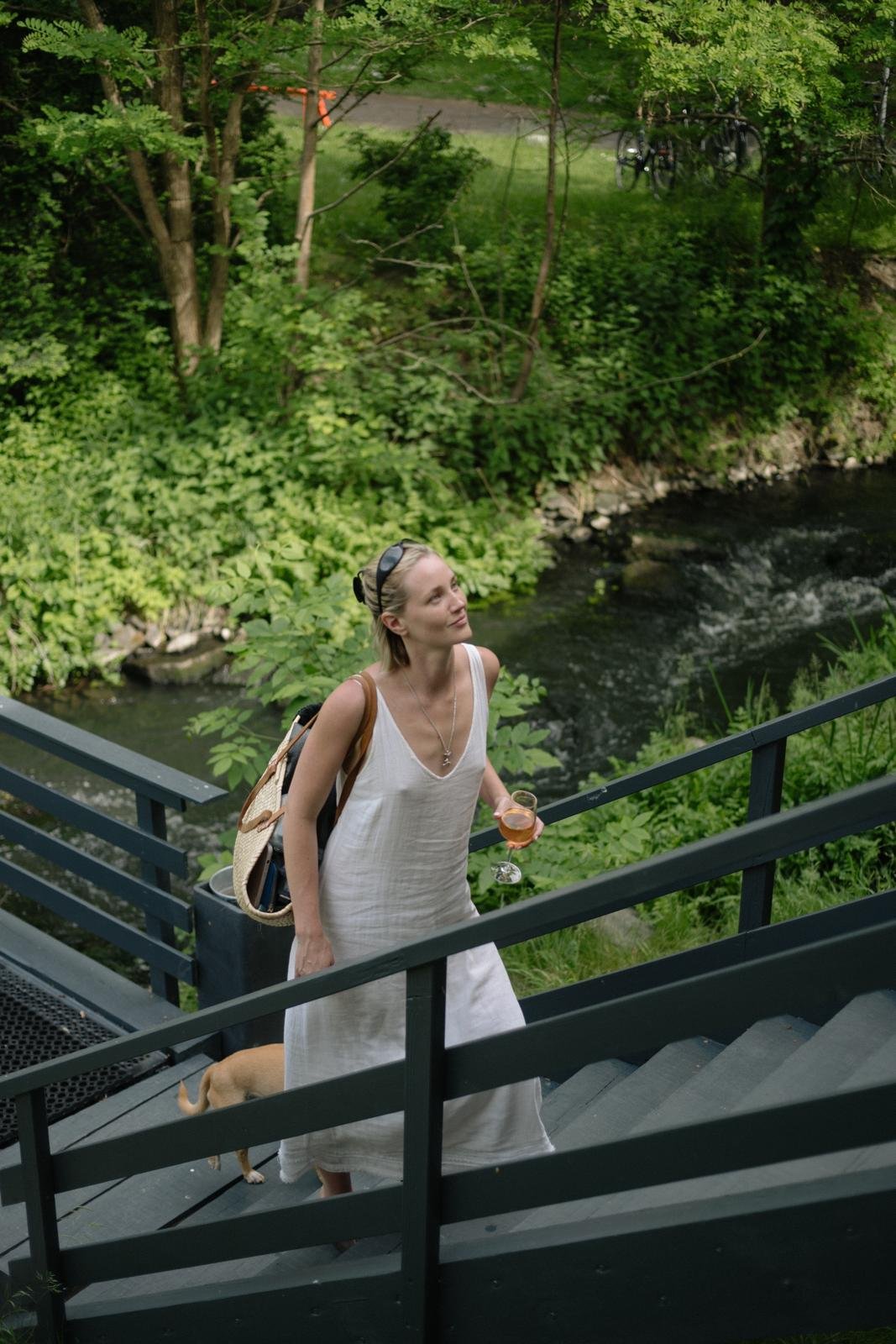

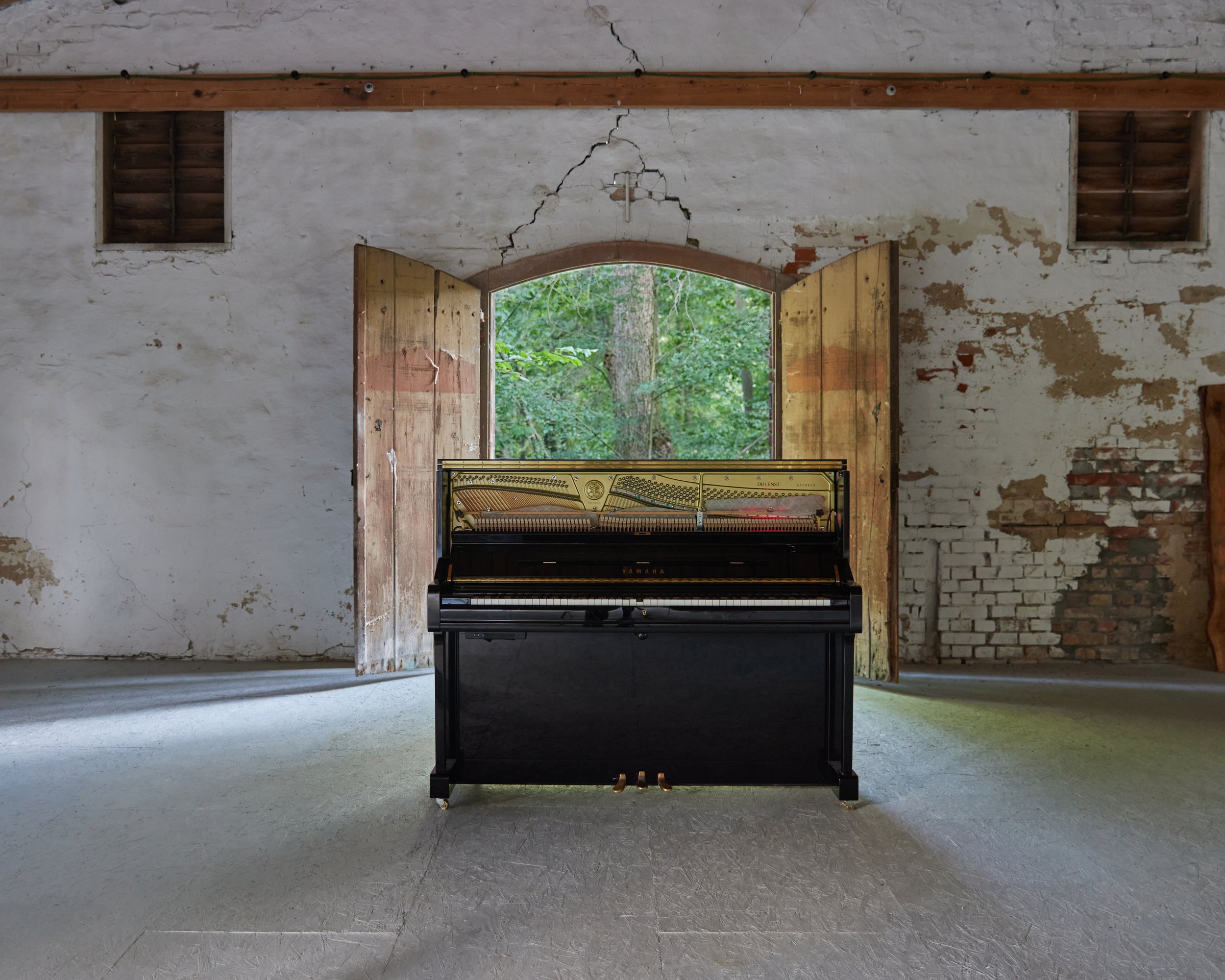
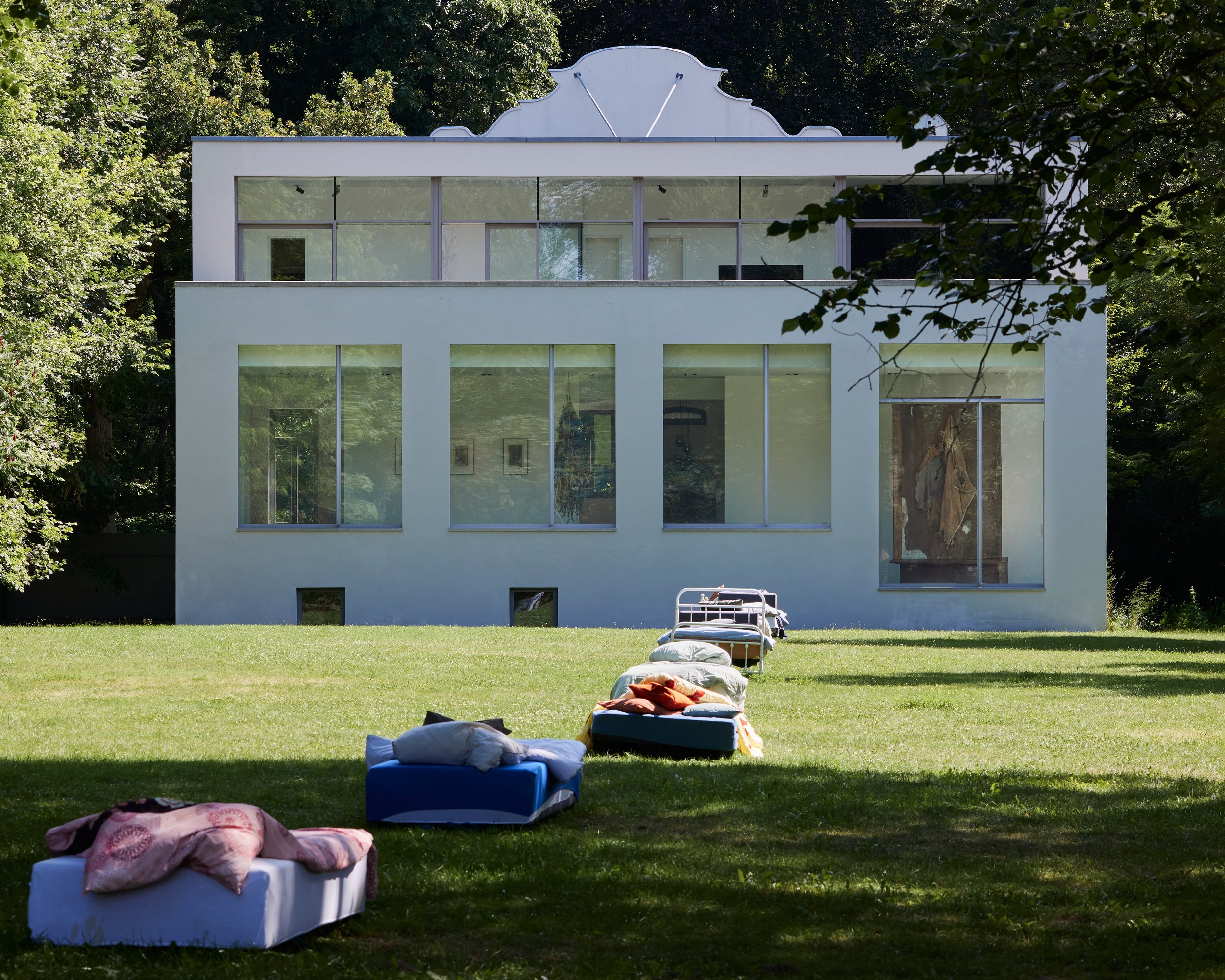
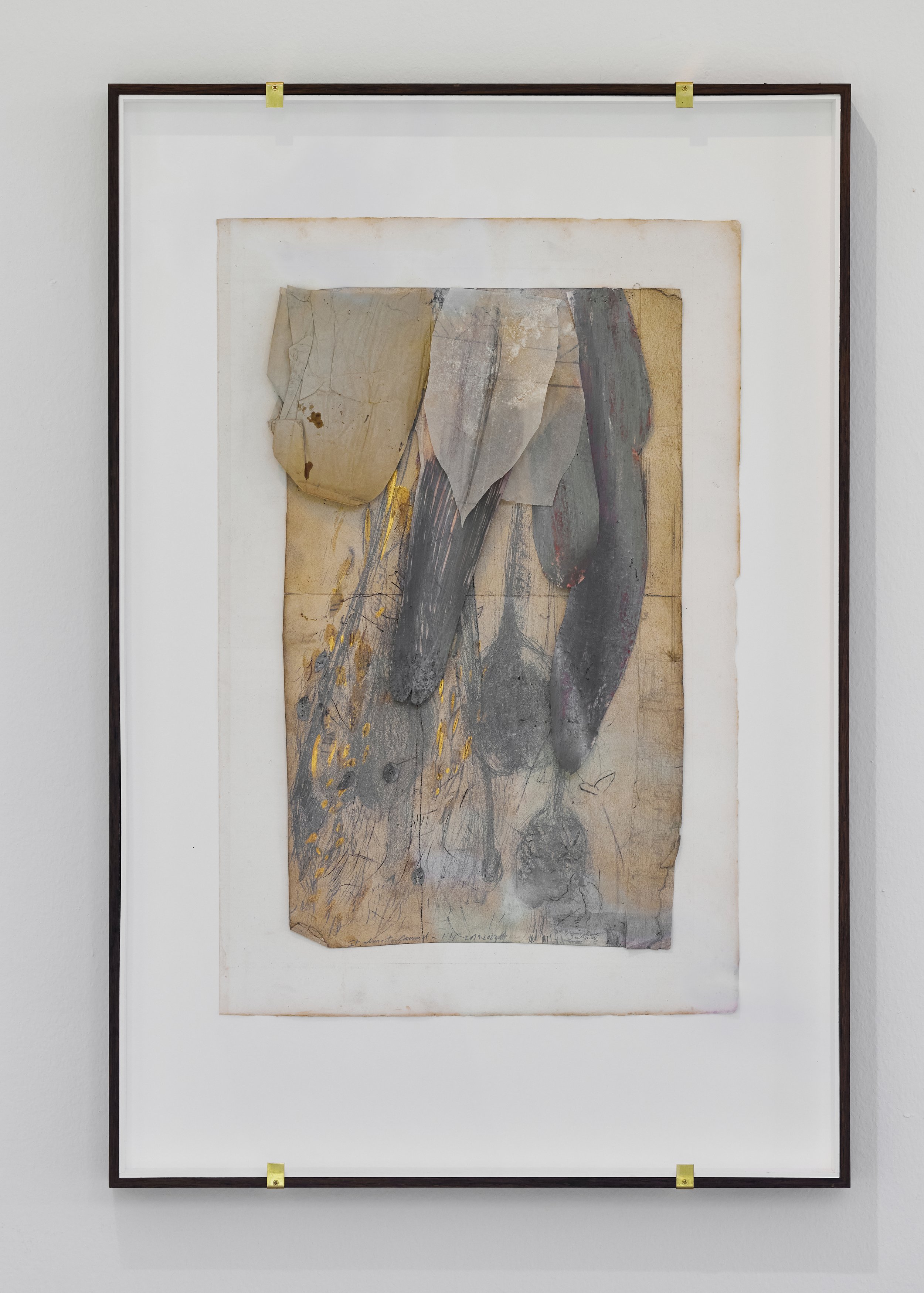

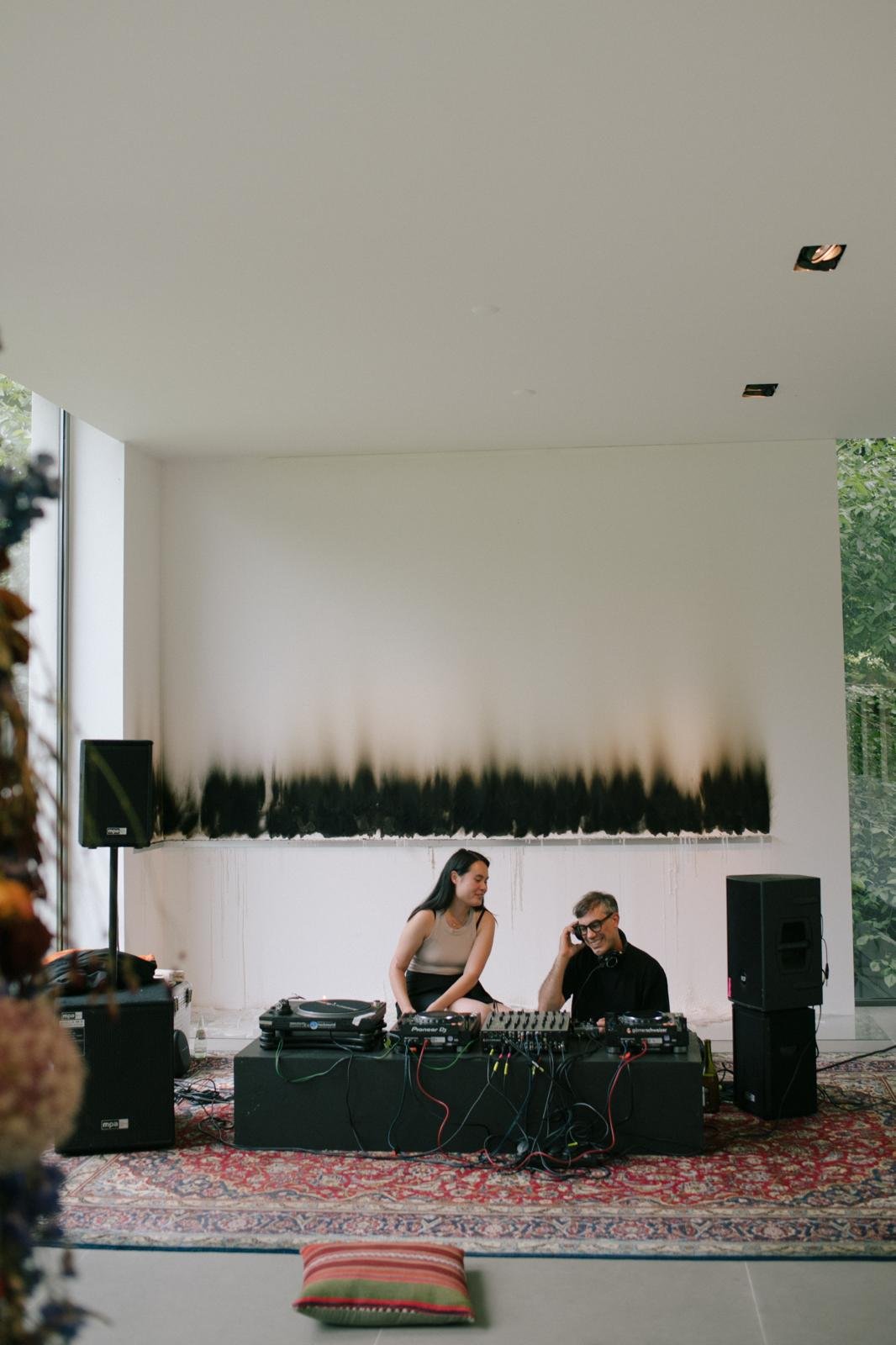
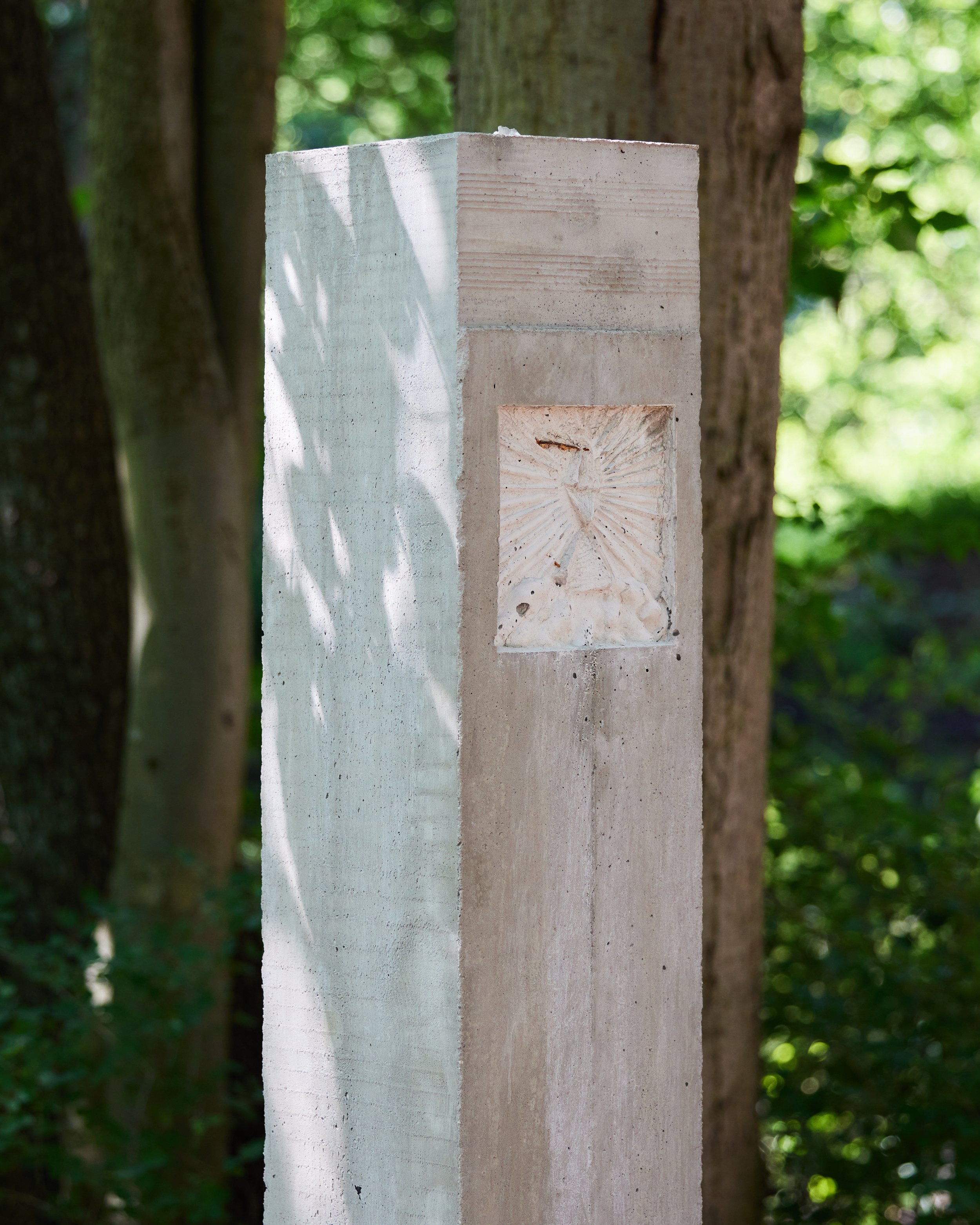
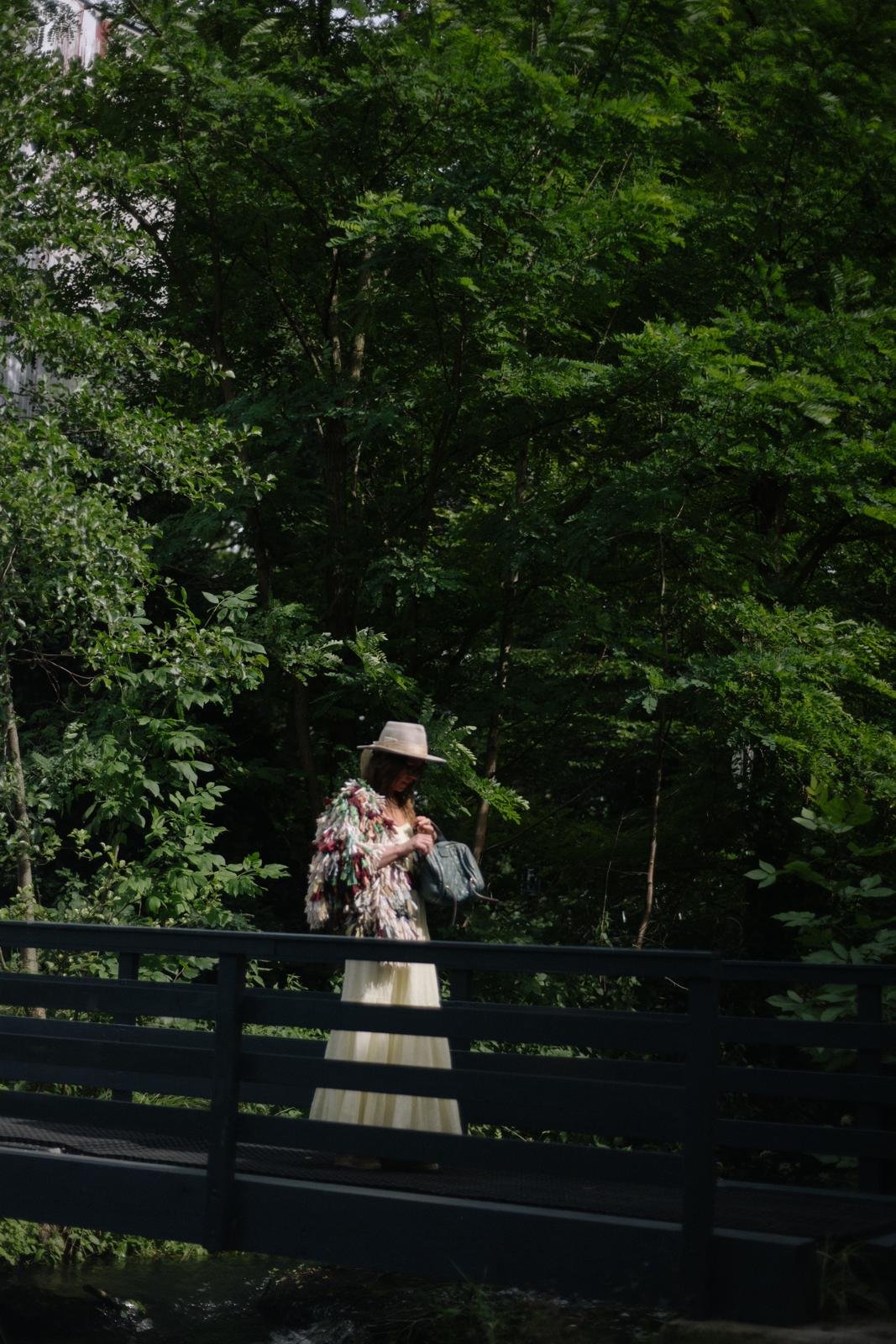
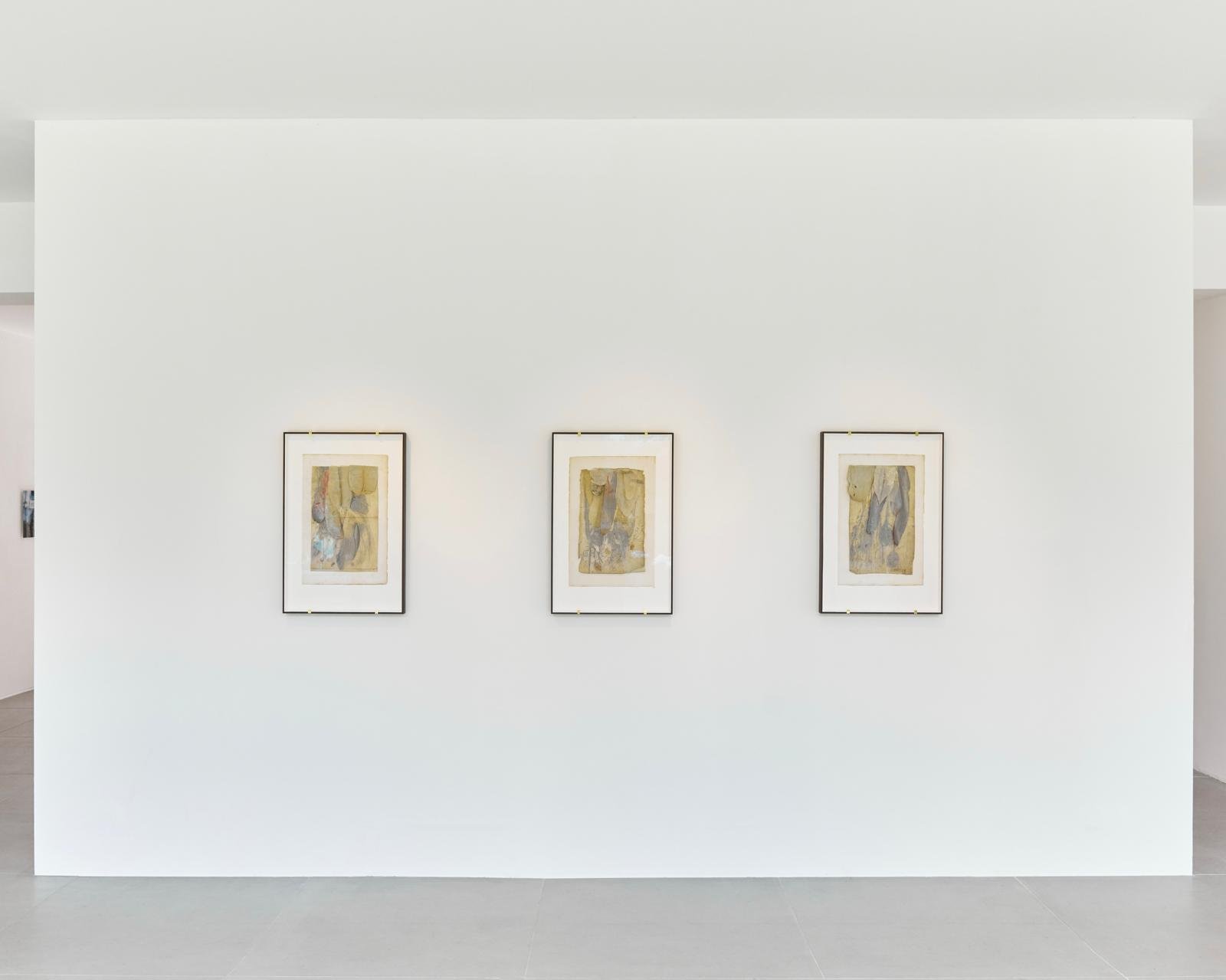

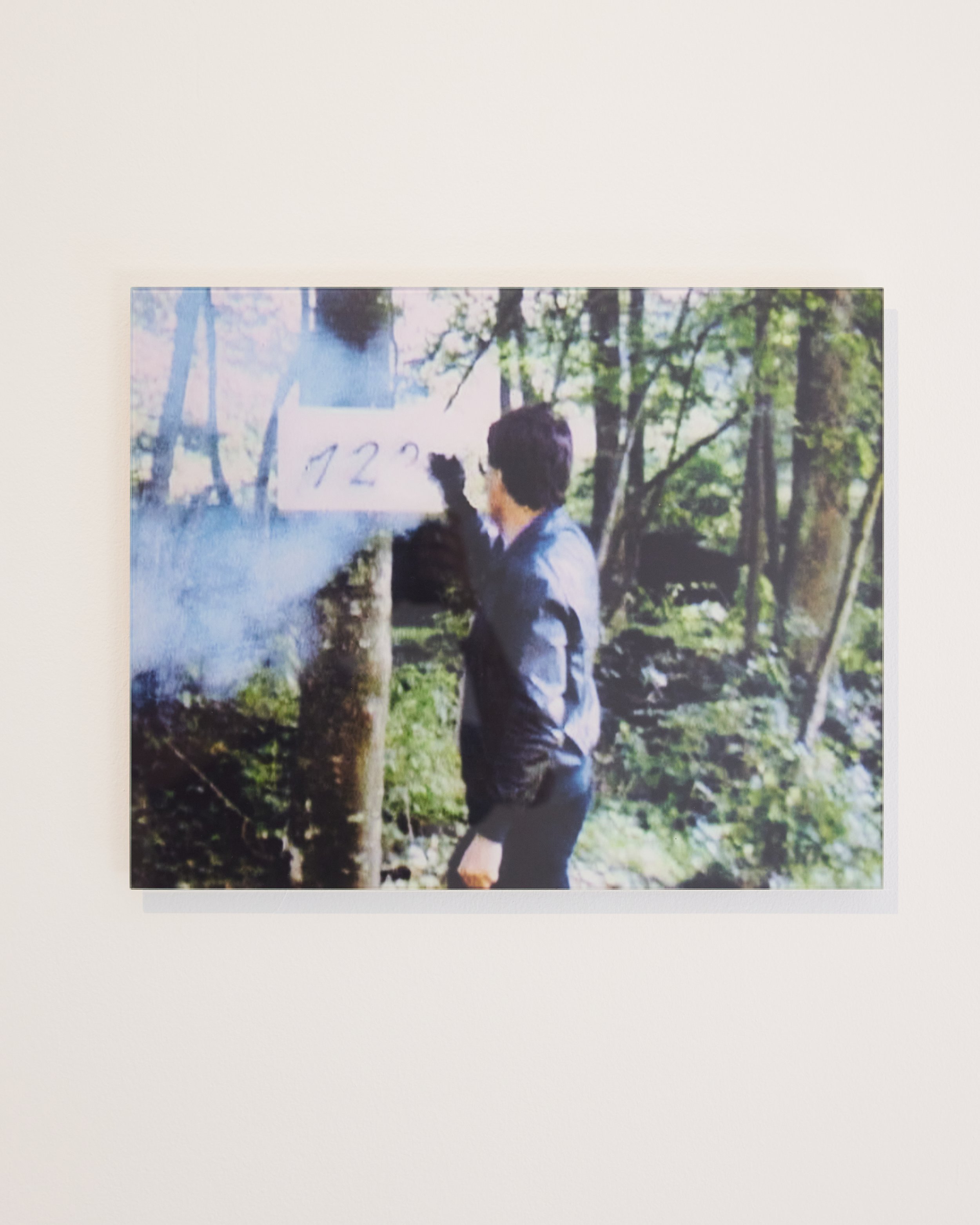
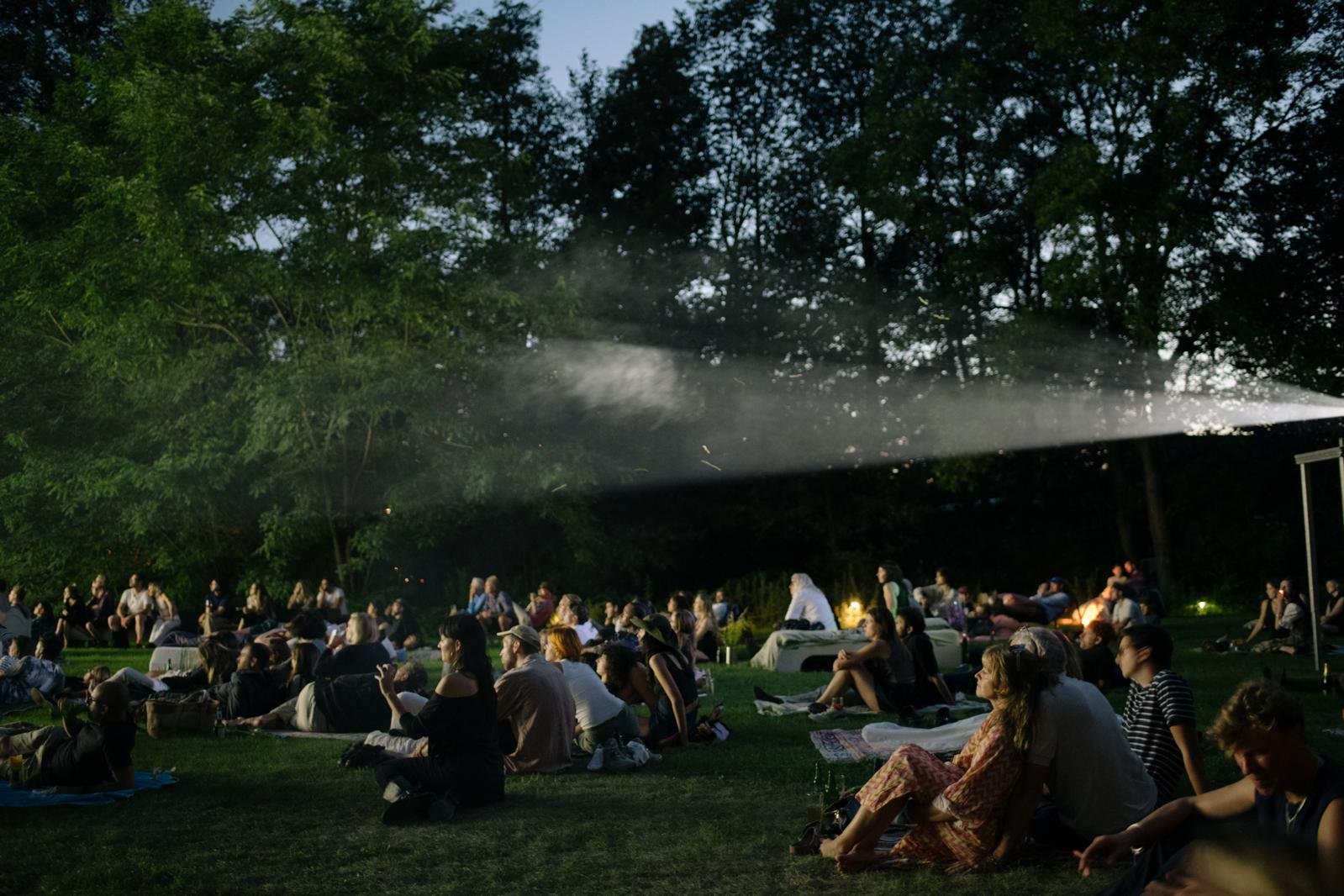
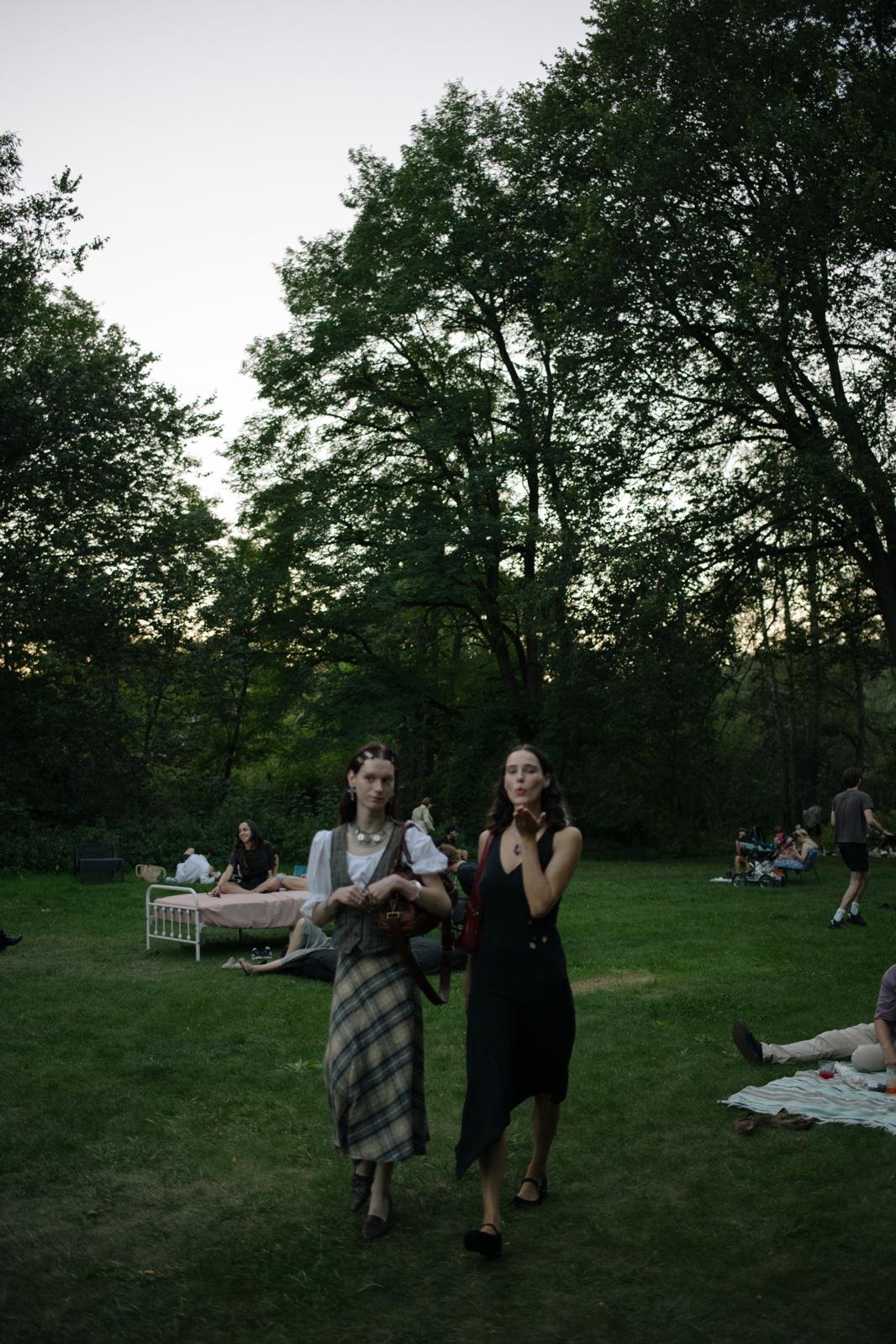
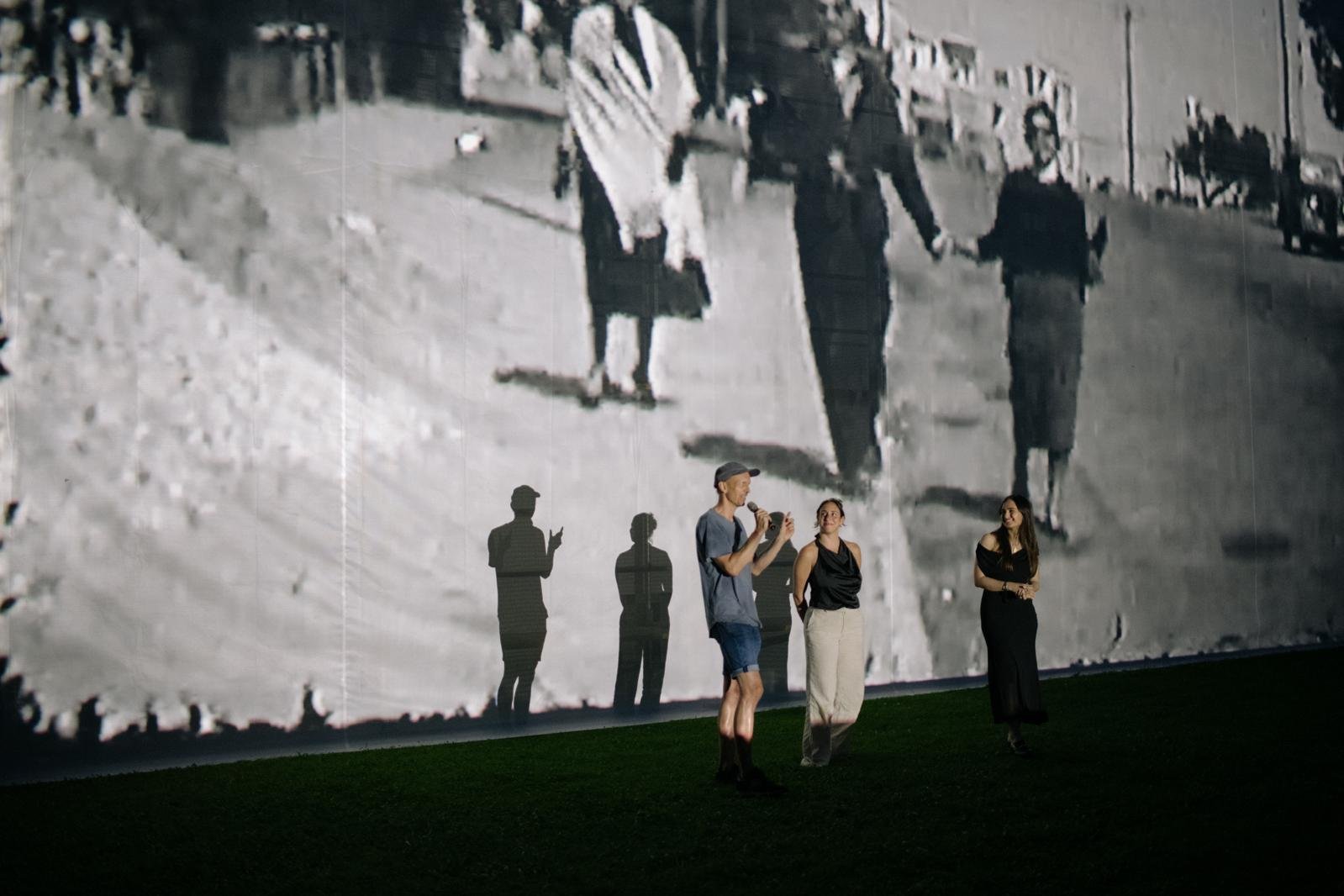
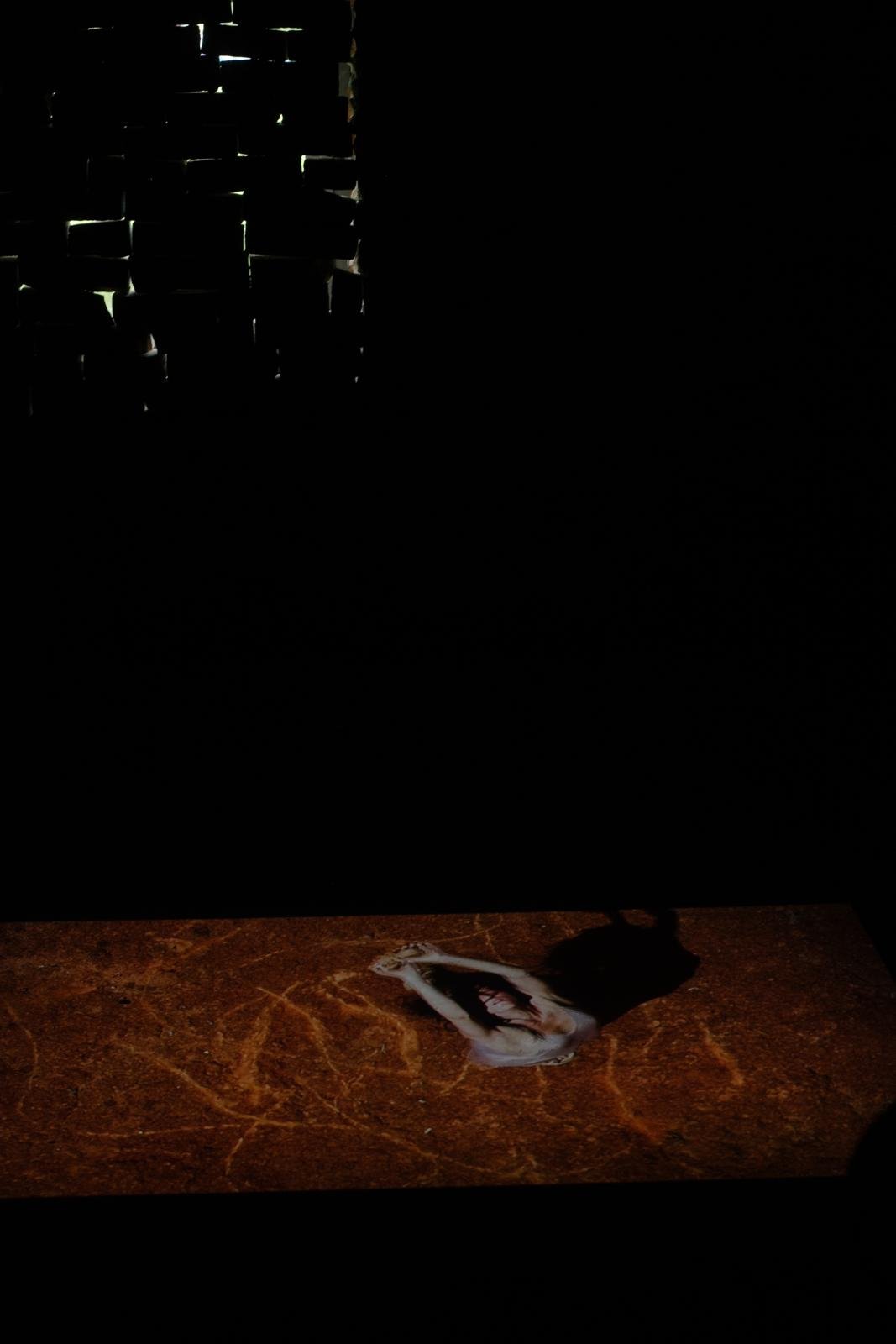
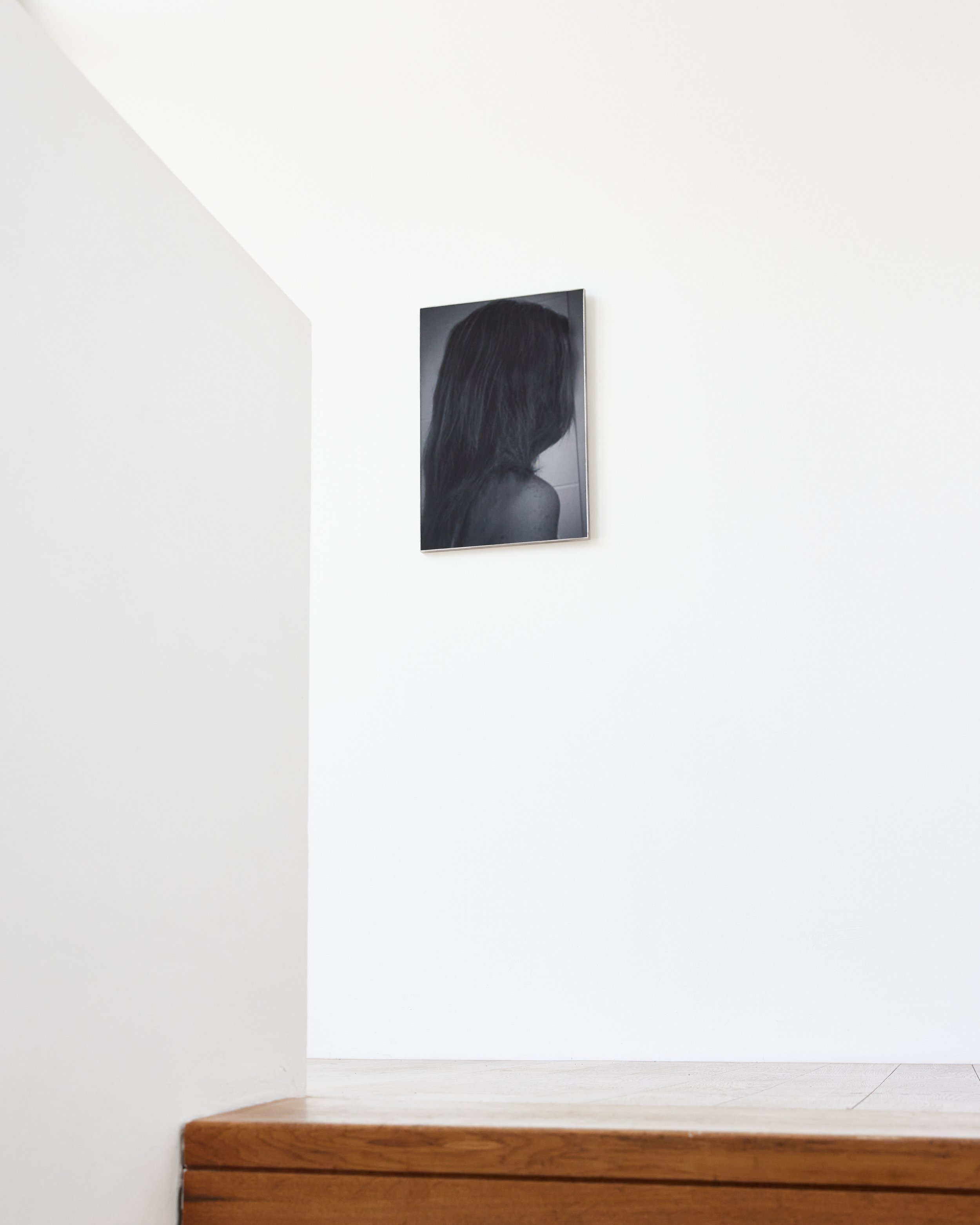
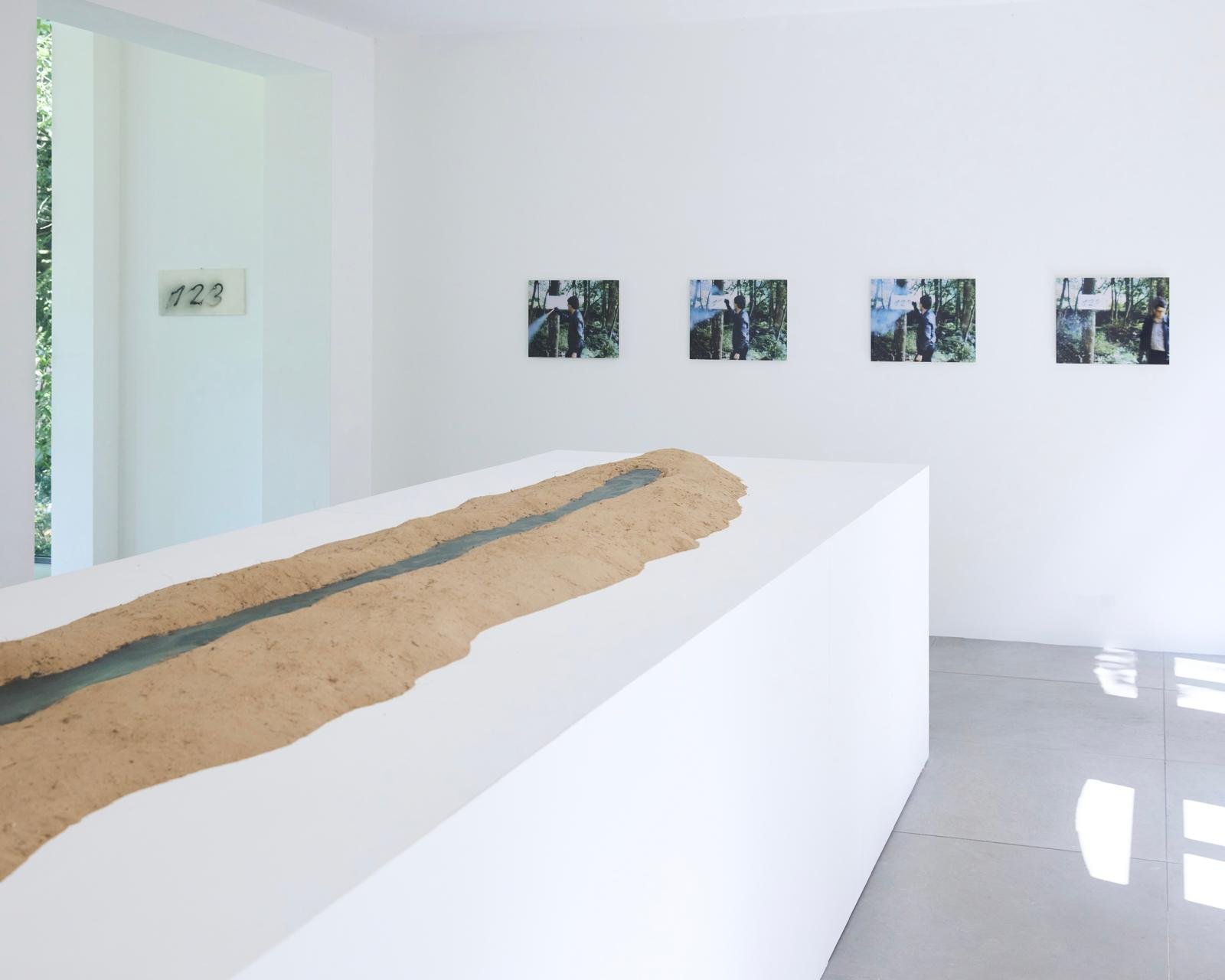

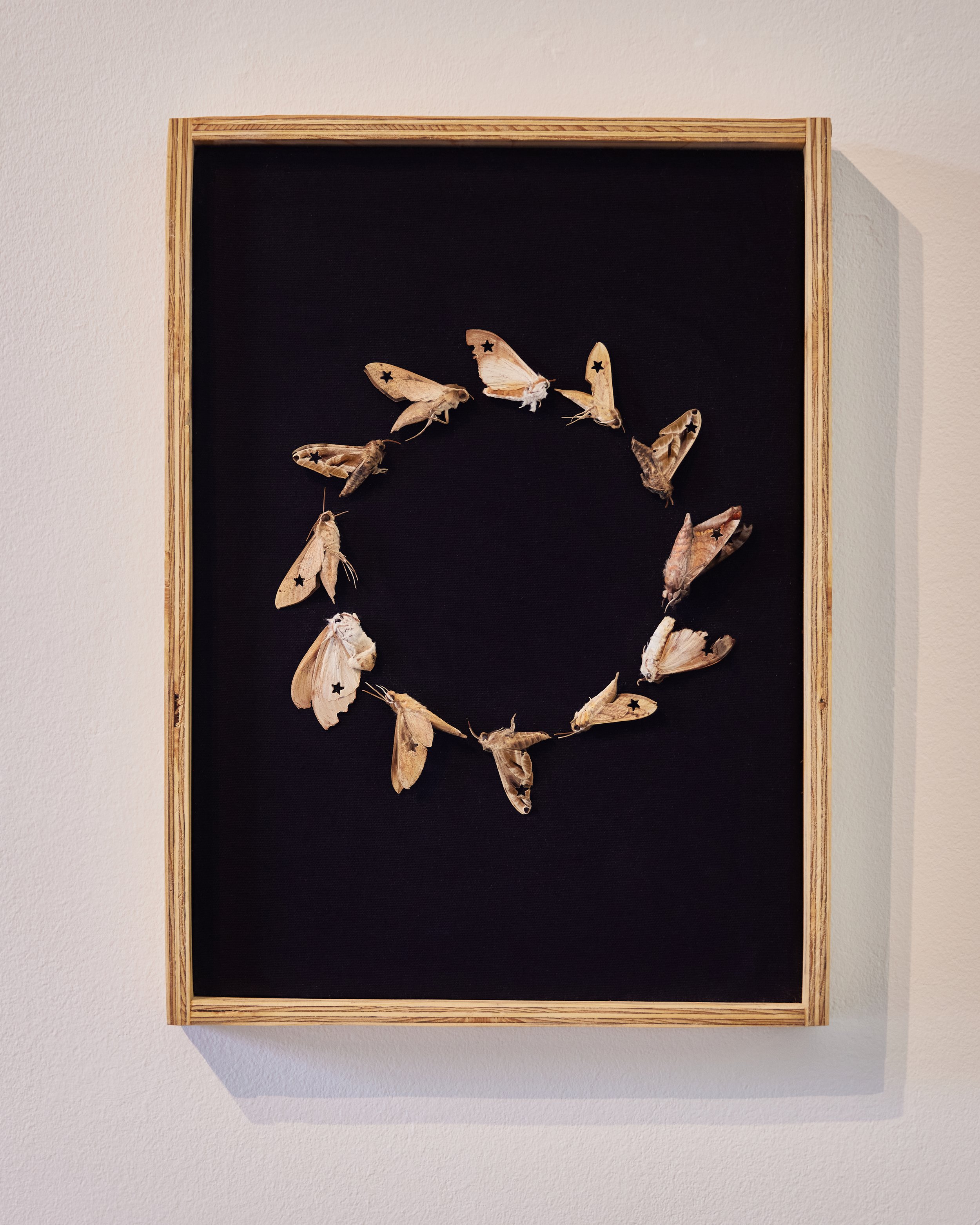
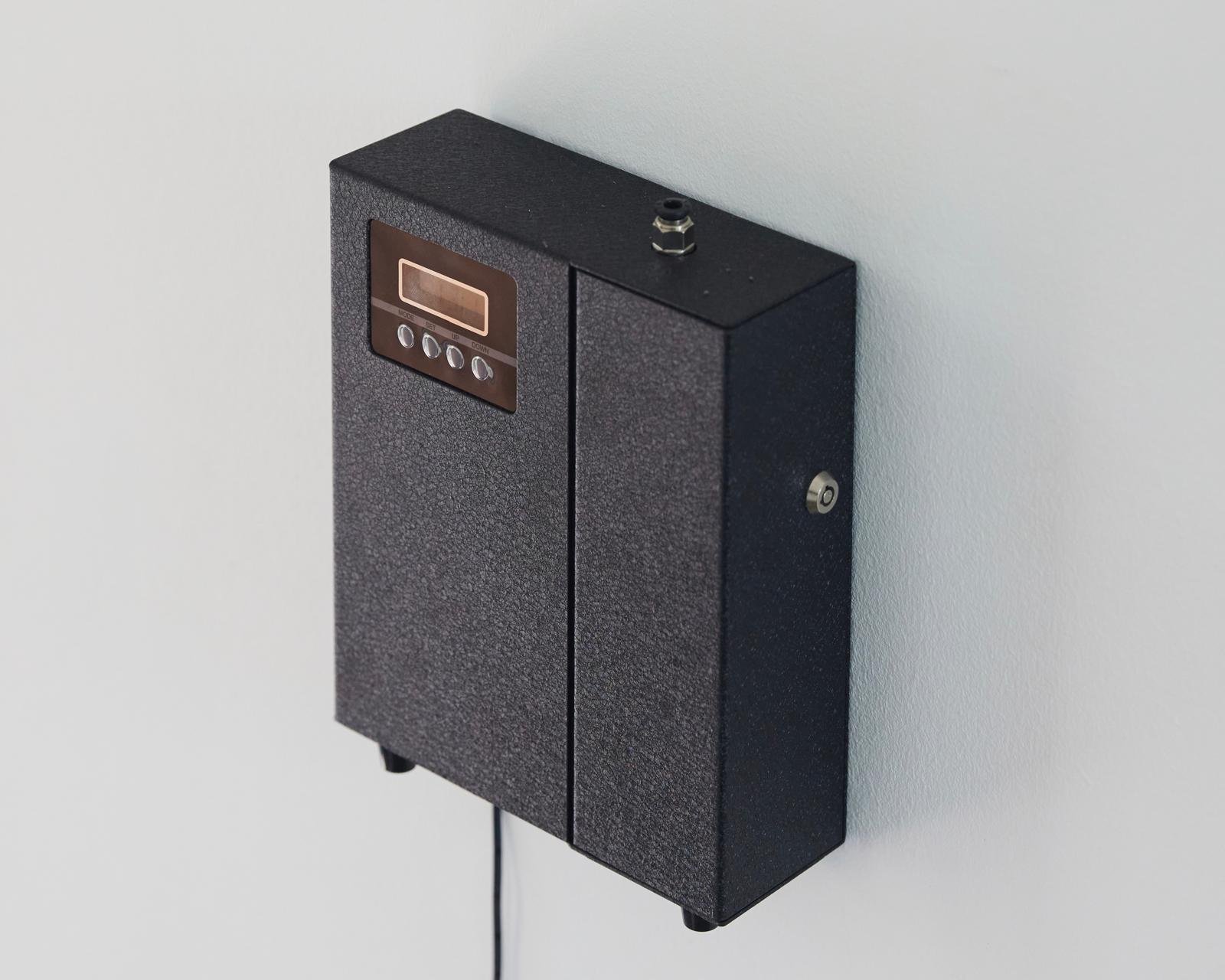
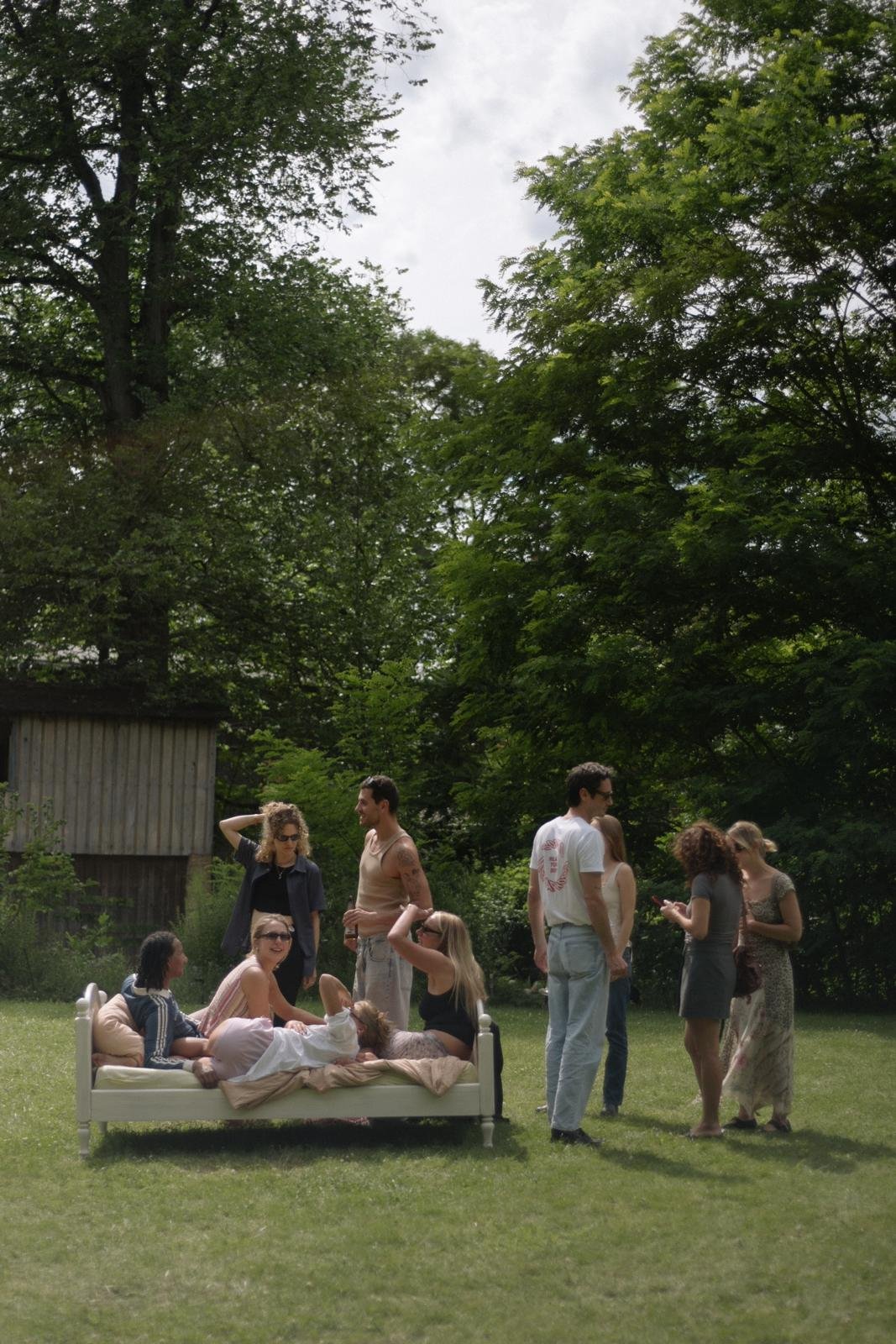
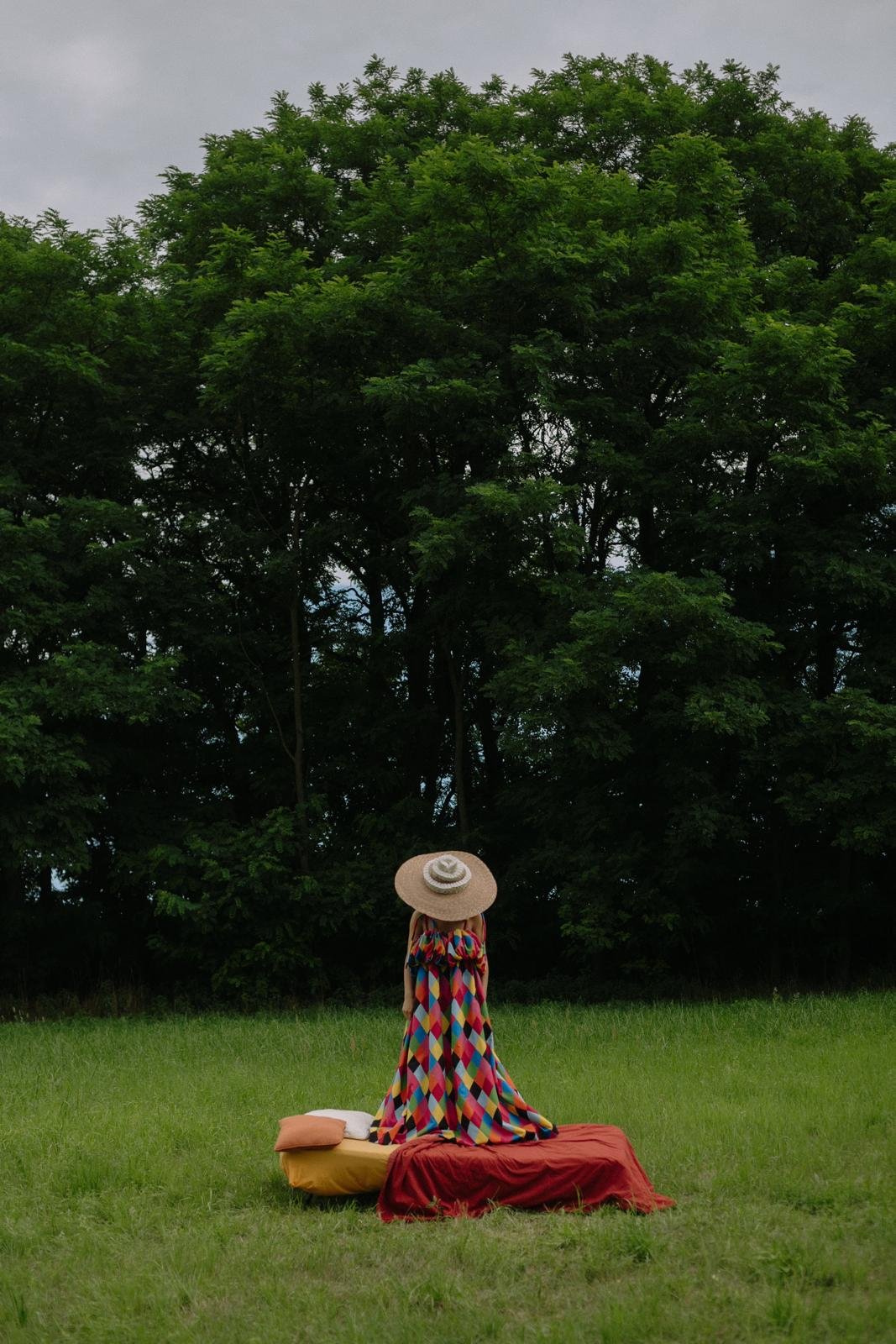
Curated by Felipe Schwager and Tjioe Meyer Hecken
Exhibition: July 06 - August 25 2024
Featuring over 25 artists, including Ana Mendieta, Ángela Jiménez Durán, Anna Talens, Berlinde De Bruyckere, Brad Downey, Dirk Braeckman, Ella Taub, Evelyn Bencicova, Isabel Cordovil, Josepha Merz, Julian Rosefeldt, Kaan Bulak, Manuela Morales Délano, Marlon de Azambuja, Niklas Bolten and Rubin Henkel, Natacha Donze, Paulo Wirz, Roman Signer, Samson G Balfour Smith, Shira Kela, Sofia Clementina Hosszufalussy, Stephanie Maier, Young Boy Dancing Group, Dorota Gawęda & Eglė Kulbokaitė, Wolfgang Tillmans and more.
Warm summer nights invite you to sleep in nature under a starry sky. A row of 30 beds winds its way through the Wehrmühle garden, up and down a hill as far as the eye can see, until it reaches the forest. Some seem to have been made after getting up, others still bear witness to the unconscious movements of the sleepers with their fluffy blankets and stacked pillows. Individual preferences for silk pillows or linen covers, plain, striped, or floral bed sheets suggest who might have slept here. The surreal playfulness of American artist Brad Downey's bed installation, dancing across the lawn, sometimes bathed in the light of the tall trees, looks like an image from a dream – only without a dreamer. Each individual bed bears witness to the still noticeable, past presence of a sleeping body.
The exhibition "Aura's Present Decay" at Art Biesenthal 2024 presents works from over 25 artistic positions that approach the materiality of the passing of time and the aura of physical absence in connection with nature.
1. The Ephemeral Nature of Art
Like the wilting flowers in a Baroque still life, Anna Talen's huge bouquet, weighing as much as an adult, hangs from the ceiling on fine gold wires as a memento mori in the middle of the room. The transience of nature is revealed in the way time becomes artistic material in her work – in the solidification of the form through the drying process, in the fading of the floral splendour and in the spread of the sweet and bitter scents. This is blended with the burnt smell left by the burning of 400 candles on a narrow shelf on the exhibition wall. The site-specific installation “The broken burned kilometer” (2024) by Brazilian artist Marlon de Azambuja shows a trace of fire reminiscent of a distant horizon of a burning forest. The traces of smoke and the wax flowing down like water due to the extreme heat testify to his immediate access to the architecture of the space. In addition to this oscillation between ritual and destruction, Roman Signer uses fire as a productive element and artistic material in his works. With a burning rocket in his hand, he wrote the numbers 1, 2 and 3 on a wooden board attached to a tree trunk. The film stills of his 1982 action in nature document his processual working method, in which Signer incorporated fire and smoke as ephemeral sculptural elements into his experimental practice. Wolfgang Tillmans takes up the motif of a burned forest in his opposite work “Wald Broil III” (2008), which is typically mounted directly on the wall. He has alienated the original photograph of a clearing with tall old tree trunks with a black-and-white copy. Vertical light stripes created by the printing process are barely distinguishable from the trunks. Tillmans literally shows only the abstract, colorless imprint of a past experience of nature. The performance “Byrial Pyramid” (1974), documented on video, is one of Ana Mendieta's best-known works. In this piece, the artist lies buried under large and small stones in a Mexican landscape. The stones slowly rolled away from her torso through the powerful movements of her deep breathing. In this way, she staged the symbiotic, energetic connection with nature as both an irrepressible life force and a metaphorical burden from which she must free herself. Ángela Jiménez Durán's installation "Temporal Anomaly VII (For Ana)" (2024) is in direct dialogue with the video. For this work, the artist collected sand from the garden of the Wehrmühle as a site-specific material reference. What is striking, however, is the absence of a human body; instead, the sand is filled with a long tongue of solidified resin. The texture is reminiscent of melted plastic or a spill of oil, creating an equally dystopian landscape image.
On each of the other two floors of the Wehrmühle, there are videos exploring the relationship between the female body and nature. The collaborative work by Evelyn Bencicova and Samson G Balfour Smith "Æther: Chapter I” (2024) is a mythologically inspired science fiction narrative about the connection between the divine and the earthly body. In contrast, Josepha Merz's video performance "dead earth" (2022) examines questions of identity, collective and transgenerational trauma. In this work, she seeks a physical confrontation with her Cambodian origins. In dance-like, excessive movements with stones in her hands, she is seen leaving a drawing on the dry, red desert soil, followed by a kind of cathartic meditation or burial ritual in which she covers her naked body with dried magnolia blossoms.
2. Aura as Temporality
The concept of 'aura' in the title is inextricably linked to the thinking of Walter Benjamin (1892–1940) and his seminal essay The Work of Art in the Age of Its Technological Reproducibility (1936). In the exhibition, Benjamin’s ‘decay of the aura’ becomes most evident in the temporal aspects of material decay, the ephemeral, as well as in the withdrawal of physical presence. In this sense, the decay is not due to the reproducibility of the artworks, but is symptomatic of a time marked by transformations caused by conflicts and wars, insecurity and instability.
Natacha Donzé's large-scale canvases from the series “Gatekeeper” (2023) look like monumental portals. As passageways or frontiers, they can serve as political metaphors for social participation or exclusion. Using an airbrush technique, the artist achieves a magical, atmospheric appearance, while the surface texture is reminiscent of the patina of oxidised metal, with drops and streaks of water running down in a moist state. The traces of the supposed aging process refer to both the transience and durability of the material over time. In front of it stands the fragrant sculpture “Censer” (2023) by the artist duo Dorota Gawęda and Eglė Kulbokaitė. The perceptible scent corresponds to a synthetic, molecular replica of air samples taken during their performance “SULK” (2018) at the 6th Athens Biennial. In the form of this sculpture, it is possible to dissolve and transfer the boundaries of a past, site-specific experience. The two artists use scent as an invisible artistic material capable of transcending time and space.
On the other side, Manuela Libertad Morales Délano's “Europe Flag” (2023) refers to geopolitical borders. Instead of the twelve golden stars, her work shows dead moths with star-shaped perforated wings against a night-black background. Her collage can be read as a nightmare, the downfall and decay of the European idea. The three positions presented here together all deal individually with the socio-political question of how an assigned space can be defined or transgressed.
3. The Vanishing of the Body
The aura as a temporal phenomenon is also revealed in the disappearance of the subjects. In Berlinde de Bruyckere's large, free-standing work “Mantel II” (2016-2018), such physical traces seem to have been left behind. The artist's work is often influenced by Christian or mythological iconography, with references to 16th-century wooden altarpieces and Baroque depictions of Saint Francis. Here, de Bruyckere subtly suggests a human silhouette with the nailed and draped fabric on the porous wallpaper and the dried wax in its grey-pink hue. The transience of physical existence always accompanies her works in a both uncanny and attractive way. On the backside on the wall, Isabel Cordovil's inconspicuous gold ring juxtaposes de Bruyckere's staged decay with symbolic aspects of eternity and the fragility of human relationships. This ring is also not worn by a person, but by the architecture of the Wehrmühle, whose history dates back to 1375. In the basement, Sofia Clementina Hosszufalussy's walk-in installation of hand-woven and painted yarn blends into the old foundation walls. It is in dialogue with Stephanie Maier's photographic series “Decay” (2011), which captures the traces of the past through the spatial or object-like remains of people. Similarly quiet and reserved are photographer Dirk Braeckmann's black-and-white prints. Only the backs of the heads of anonymous female figures can be seen, who have obviously turned away or seem to be hiding their faces at the moment the photograph was taken. It is questionable whether we can speak of portraits at all, since so few features are shared. In this way, Braekmann's works also turn away on a formal level. The texture of long hair, perhaps a few points of light and shadow, a corner of a room - in all its mystery, it is the fleeting nature of the medium of photography that the artist conveys.
Ella Taub's white textile sculpture “The Dress I Never Wore” (2024) hovers like a ghost over the staircase railing. Red threads, reminiscent of blood vessels or fresh scars, hold together individual fragments of semi-transparent organza fabric. The artist demonstrates a liberation from the expectations of the past by shedding the wedding dress or the clothing as a social skin. Taub's installation “Safe Space” (2024) illustrates another textile-based narrative of deeply personal bonds and connections. Her textile sculptures of knotted sheets and curtains of white lace, tulle and cotton hang from the ceiling like cocoons. She deliberately chose household textiles whose function is to protect and conceal. The traces of dirt on the fabrics are clearly visible. On the other side, in front of wide open doors overlooking the forest, the keys of a piano move as if by magic. One can get the impression that the melody is accompanied by buzzing insects and a babbling brook. For their collaboration "Fermata" (2024), film producer Niklas Bolten and sound artist and composer Rubin Henkel recorded the biorhythms of plant species from the Biesenthaler Becken. The result is a poetic soundscape that transcends the boundaries between culture and nature and highlights the interactions between humans and the environment.
The exhibition offers a reflection on the transience of existence and the role art can play in distilling meaning from the passage of time. The olfactory work "Non-place" (2024) by Dorota Gawęda and Eglė Kulbokaitė is installed in the area where one enters or leaves the Wehrmühle. The scent of this non-place is composed of warm, skin-like and musky notes that evaporate just as quickly. The scent evokes associations and memories that allow the space to be experienced as something else, beyond the boundaries of the surrounding architecture and perhaps beyond reality, like in a dream.
Text by Madeleine Freund
Photos By Jack Hare , Lilika Strezoska


